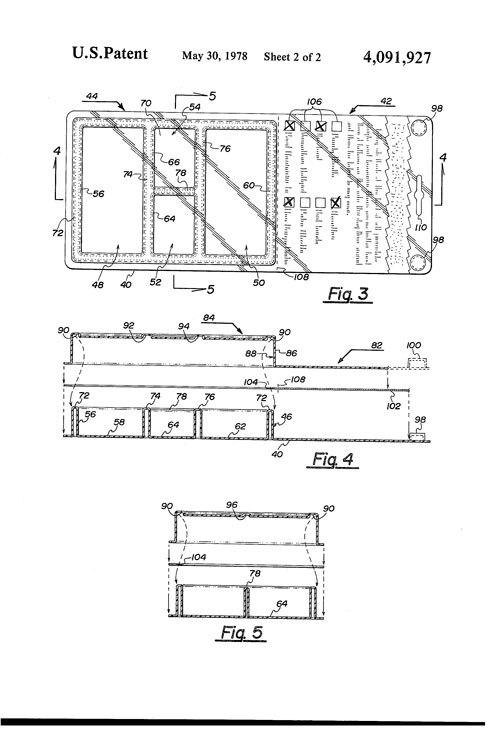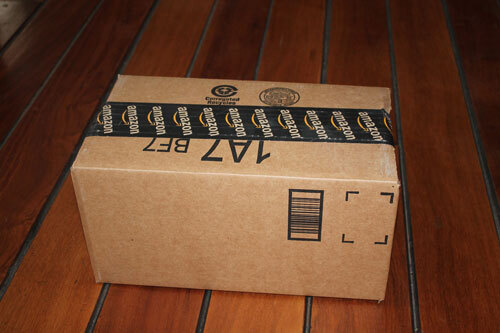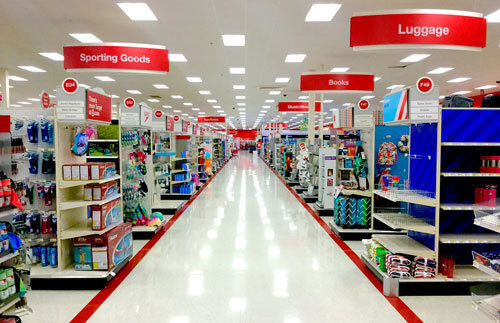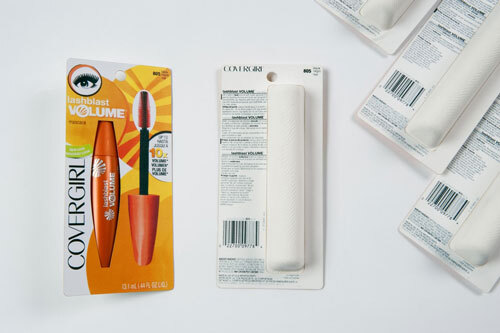Today in Tedium: We owe a lot to plastic, which helps to create and protect many of the products we use on a regular basis. Plastic can be used to design many great things. But it can also be used in extremely consumer-hostile ways. One of those ways is in the form of the tamper-resistant blister package, which was originally used in a positive way, only to be turned on consumers, creating a constant source of frustration—and even at times, a source of bodily injury. Today’s Tedium is about blister-style packaging, and how it became the original dark pattern. You’ll never get in that package without a pair of scissors, so don’t even try. — Ernie @ Tedium
Today’s GIF comes from Curb Your Enthusiasm’s canonical take on wrap rage.
Looking for a little help in figuring out your approach to productivity? If you’re a Mac user, be sure to give Setapp a try. The service makes available hundreds of apps that can help you get more focused, simplify complex processes, even save a little time—all for one low monthly cost. Learn more at the link.
1872
The year that the German chemist August Wilhelm von Hoffman invented an early form of polyvinyl chloride, or PVC. Despite his early work, the resulting material was unstable, and was perfected by two later inventors—Friedrich Heinrich August Klatte, a fellow German chemist who came up with a PVC production process in 1913 that used sunlight for polymerization, making it easier to produce; and Waldo Lunsbury Semon. In 1926, Semon, an employee of the tire manufacturer B.F. Goodrich, stumbled upon a plasticized version of the polymer that made it flexible but inert. (The product Semon developed is still sold today under the Koroseal brand name.) Together, these innovations allowed for the creation of what is one of the world’s most common materials, a material at the center of the kinds of packaging that make you want to tear your hair out.

The reason why this toy is still sealed is because the poor kid couldn’t figure out how to open it up. (via eBay)
How we got blister packaging, and why it’s so frustrating to use
Throughout my childhood, I have lots of memories of getting gifts—often of the handheld, gadgety variety—and not being able to use them right away, because I couldn’t open up the package.
It was like a prison of plastic that surrounded the Tiger handheld game I just received—a well-formed blister of flexible, but thick plastic that prevented me from playing Aladdin, or opening up that pack of batteries I needed to get my Game Boy going.
In many ways, these products are prime candidates for blister packaging. They’re fairly small in size; they’re not cheap, but not expensive, either; at their heart, they are impulse buys.
Blister packaging, which relies on molded plastic, was not at its heart an anti-consumer mechanism. In fact, one of its primary use cases was specifically intended to help consumers. In the 1960s, blister packs became a key element of delivering medicine to consumers—with oral contraceptives, which needed to be taken on a timed cycle, one of the first successful products to use foil-backed blister packs.
These pharmaceutical packages are fairly common today, and make it easier to properly measure dosage.
But how did packaging companies shape the plastic in such a way that they could create the blister? In many ways, it comes down to the unique properties of plastic, which vary based on type.

Pharmaceutical blister packs are close cousins of the kind that annoy people in retail settings. (Efraimstochter/Pixabay)
Generally, plastics are susceptible to two types of phenomena, depending on the variant: Thermosetting, in which plastic becomes stronger when it gets hotter; and thermoforming, in which plastic becomes more malleable with heat.
Thermoset plastics were the most popular type around when plastic first went mainstream; bakelite, a common early type of plastic that has become collectible in recent years, is a thermoset, and it has tended to be used in heat-resistant settings.
But thanks to heat, thermoformed plastics (of which PVC is a prominent example) tend to be much more flexible and moldable, which makes them well-suited for packaging. It was these qualities that made them useful for “blister”-style packaging, which refers to the fact that there’s an object inside of the molded plastic lump, just as there’s something inside the blisters you get when you take a 10-mile walk.
Add a little bit of heat in the right spot and you can mold a sheet of plastic any which way—and ensure that plastic perfectly matches the shape of whatever piece of junk you’re trying to sell.
It’s in this spirit that new forms of packaging emerged that took advantage of these properties—first, medical packaging in the 1960s, and then starting in the late 1970s and early 1980s, blister or clamshell packaging.
Clamshell packaging in particular is an interesting case. It’s the kind that people think of when they think of packaging that turns into a strugglefest. Commonly, an inventor named Thomas Jake Lunsford gets the credit for this type of packaging, which involves putting the product and any manuals or promotional materials in the middle of two plastic halves. Previously, most packaging of this nature had a cardboard back half which was easier to remove, but effectively allowed for the destruction of the package just to use it.

This clamshell packaging patent is not as annoying as the one used on the Tiger electronics toy above. (Google Patents)
I’m not totally convinced he deserves the blame, though, because if you look at his invention, it’s fairly innocuous compared to the clamped-down experiences that most people associate with wrap rage, and most importantly, Lunsford says in his patent application that his design is intended to be reusable—something most clamshell packs assuredly are not.
It may be a case where Lunsford built something with good intentions only to see later inventors develop those goods with bad intentions.
1982
The year in which a number of Tylenol packages at a Chicago-area grocery store were tampered with, leading to seven deaths. The infamous incident led to a serious rethink of packaging by consumer goods companies, which responded to the incident by heavily investing in new methods of securing their containers, in an effort to meet Food and Drug Administration guidelines created after the incident. One such tamper-evident approach involves putting thicker form of shrink-wrap around the lid of a bottle or can; another involves adding a piece of foil to the lid. The idea, essentially, is to ensure that you know if someone opened the container before you did. Blister-packaged pills were ahead of the game on this by two decades.

The tri-fold clamshell is designed in such a way that it can be stocked somewhat normally on a store shelf. (via Alibaba)
Five variants of blister packaging, and what makes each of them “special”
- Face-seal blister packaging. Perhaps the most low-end of the common blister packaging types, this essentially involves a sealed piece of plastic on top of a piece of paperboard. This is used for cheap or light items, mostly, like lip balm.
- Trapped blister packaging. In this case, the barriers of the plastic blister sheeting are located between two pieces of paperboard, allowing for more design options on the packaging. You might see this used by memory card manufacturers like Sandisk.
- Clamshell packaging. Probably the kind you think of when the concept of blister packaging comes up, this product variant is known for its thick packaging and tough seal, which can be difficult to remove depending on the production process. As mentioned above, old Tiger Electronics games came in this format (among numerous other things) but the company has notably simplified the format for its recent revival.
- Tri-fold clamshell. When the product is particularly large or unwieldy—think a computer mouse, webcam, or similar piece of technology equipment with an uneven shape—it might use this format of clamshell, which adds a double-hinge style at the bottom of it so it can stand on its own—which also, by the way, allows it to be set on a shelf without the need for an extra hook.
- Skin packaging. Used for foods such as steak or other types of meat, this packaging type uses a vacuum seal on the product so that the plastic totally surrounds it. The plastic is usually thinner than what you’ll find in a blister seal, and unlike the other types, it may not use a paper card at all. While a different process from blister sealing, one might argue it actually looks more like a blister than traditional blister packaging does.
“It was very annoying. When you are buying something that is really expensive, you don’t expect it to be hard to take out of the package.”
— Reena Russell, a consultant for the energy industry, expressing her frustration with plastic blister-style packaging in a 2004 Wall Street Journal article. (As noted by the headline, “The Puncture Wound I Got for Christmas,” the package actually injured her.) Part of Russell’s frustration is that the packaging, designed as an anti-theft mechanism, had gone upmarket, and was now being used for higher end products—in Russell’s case, a handheld Palm computer. Perhaps because of frustrations like this, many modern smartphones and similar computing devices don’t actually come in blister packs anymore. (OK, maybe burner phones do.)

Amazon has pioneered a concept called “frustration-free packaging.” (josemiguels/Pixabay)
Why opening a package from Amazon sucks a lot less than opening a blister pack
While I can’t guarantee this will be the case every single time, one thing that you might have realized in reading the prior section is that you’ve probably run into hard-to-open blister packaging less in the past few months than you might have previously.
And the reason has everything to do with why blister packaging sucks so much.
See, the reason why blister packaging, or clamshell packaging is so annoying to open is because it’s designed as a theft deterrent device of sorts.
For retailers, shoplifting is a legitimate concern. Last year, the National Retail Federation found that theft, fraud, and other losses caused by retail shrinkage cost the industry more than $50 billion dollars in 2018 alone.
Obviously, retailers are always looking for ways to prevent shoplifting and other forms of shrinkage, and while putting cameras and RFID sensors everywhere is fairly effective, a more old-school approach that is commonly seen today involves making the packaging really annoying.
Lots of examples of this dynamic exist. For example, part of the reason why the record industry tried making longboxes the primary receptacle for compact discs, despite the size being unnecessary, is that it made the discs harder to steal.

If you go to a Target or Walmart, you will most assuredly run into clamshell or blister packaging, especially for high-value goods. (jeepersmedia/Flickr)
There are a few ways to prevent things from being stolen from a store, but the most notable include making a package an unwieldy size, making it hard to hold onto, and making it hard to open without a lot of work.
Blister packaging does all of these things. It’s harder to shove in your pocket, you need tools to open the packages up, and if it’s been tampered with, it’s obvious.
The problem is that what makes something hard to steal also makes it a challenge to open for legitimate customers. It turns a normal consumer experience into something hostile. And it creates an opportunity for someone to disrupt the status quo.
This is where Amazon comes in. There are a lot of things that one can criticize Amazon for, but one of those things is not the concept of “frustration-free” packaging. Introduced way back in 2007, the company pioneered the idea that, if you’re getting a packaged shipped to your home in a box anyway, there is no need for the consumer-hostile packaging. In fact, they make it easy to open up the thing you just bought in many cases.
Recently, the company has been doubling down on this idea, pushing the companies that sell products through the service—most of the global economy, essentially—to follow its lead.
“At Amazon, it’s our mission to be the world’s most customer-centric company, and we continue to raise the bar by providing customers with what they want: minimal, protective and functional packaging,” the company stated in a document acquired by Packaging Digest.
Now, there are concerns about waste and sustainability driving some of Amazon’s work on this issue, but not to be lost is the raison d’être for this effort in the first place: the brick-and-mortar retail industry’s natural reliance on frustrating packaging design. Amazon turned a longstanding frustration that consumers had with brick-and-mortar stores into a competitive advantage.
Granted, they have their own issues with theft—porch pirates have been enough of an issue that Amazon has invested heavily in a home security camera business in part to help track such theft.
Amazon is a controversial company that uses controversial tactics and controversial means to get ahead. But at least they make it easier to open up the things we bought … right?
Blister packaging is annoying, it potentially creates threats of injuries, and thanks to Amazon, it might actually encourage people to use online shopping over brick-and-mortar retail.
But these things may not even be the worst elements of blister packaging. In truth, it might be the fact that it’s very tough to recycle.
There are a few reasons for this. For one, many blister packs don’t have their plastic resin identifier code labeled on the packaging, which makes it difficult for recyclers to figure out what it is. For another, the type of plastic used has a bad chemical composition for recycling, which makes it a bad idea to put in the bin.
“You absolutely want to make sure that you never ever put PVC into your recycling bin,” said Steve Alexander of the Association of Plastics Recyclers, in comments to The New York Times last year.

An example of PulpWorks’ plastic-free taken on blister packaging. Note: No blisters!
The problems with recycling have helped encourage the creation of alternatives. One of those alternatives is called PulpWorks. Rather than covering the object in hard-to-bust-open plastic, the design of the packaging purposely leaves a portion of the object visible, while surrounding the object with biodegradable materials of the kind used in many egg cartons. It solves the theft-risk problem through design, not simply by covering the whole thing with a non-reusable plastic shell.
Paul Tasner, the co-inventor of the product, noted to The Wall Street Journal in 2014 that the design was inspired in part by irony.
“My wife and I were always complaining about opening those things and then one day she brought home the tool to seemingly end all of that difficulty,” Tasner told the paper. “It was a special set of shears designed specifically for safely cutting open blister packs and clam shells. However, in a completely absurd twist, the shears were actually packaged in a blister pack.”
Plastics have played a key role in the modern world we have today, in ways big and small. But really to solve the intertwined problems of packaging and theft, we need more clever thinkers—so that the next time a poor kid gets a Tiger Electronics game, they can actually open up the box.
--
Find this one an interesting read? Share it with a pal!
Correction: An earlier version of this article misstated Packaging Digest’s publication name. We regret the error.





